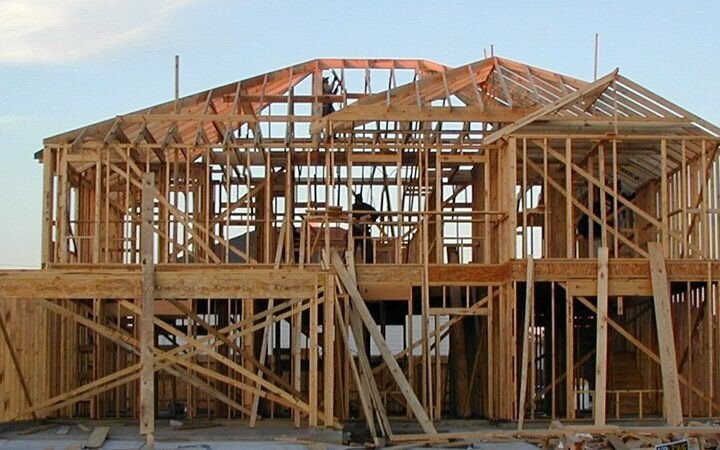What will happen to the housing market after lockdown2.0?

New Zealand dons the mantle of one of the world's least affordable housing markets.
After the 2020 lockdown 1.0, the housing market boom saw house prices skyrocket, and lack of supply was one of the main reasons.
National average property values increased nearly 27 per cent in the 12 months to August, taking the average to $937,148.
The pre lockdown 2.0 July 2021 listing figures from Realestate.co.nz showed the number of houses for sale were at near-record lows. Listings were down by 33.3 per cent year-on-year in June.
The CoreLogic House Price Index (HPI) showed that nationwide values rose 1.6 percent in August 2021, slightly reduced from the 1.8 per cent growth in July.
Recent figures from the Ministry of Housing and Urban Development showed over 42,000 people were living without shelter, in temporary accommodation or sharing accommodation.
The public housing register has a backlog of 23000 applicants.
The overall housing shortage figure quoted is between 40000 homes to 67000 homes, the latter estimated by Kiwibank.

In the basic paradigm of demand and supply, there is little disagreement that Auckland faces a critical supply shortage and significant demand growth, resulting in considerable house price growth every year.
The dream of owning your house is thus fast evaporating for the younger generation.
Recent CoreLogic data suggests that one has to save 30% of your median-income household income for nearly 250 weeks before it is enough for a standard deposit as per today's LVR requirement.
ANZ economists estimated house prices in July 2021 were running at more than 10.5 times the median disposable income, up from the 8.3 times level seen in June 2019 - in pre-Covid times, when the median household disposable income was $72,939 as of June 30, 2020.
So, what do the current lockdown 2.0 in August/September bode for our construction sector in general and the residential housing market in particular?
Even during pre-lockdown, before August 17 2021, the building industry in New Zealand was reeling with shortages in building materials, caused primarily by an increase in demand and the global supply chain disruption.
Timber for new homes was already on over three months waiting. Steel was in short supply. Labour shortages were delaying projects, and overall the cost to build new homes had grown significantly.
This current lockdown is in no way going to either increase the supply of building materials or slow the demand for building materials; instead, this lockdown is going to exacerbate the supply chain driven shortage of building materials.
In the current lockdown, most building material manufacturers have stopped manufacturing, which will undoubtedly negatively impact stock availability.
This shortage of building materials will delay new house completions, leading to lower house supply and increased house prices.
The current lockdown, whereby the government chose to stop construction activity, will delay existing and future new house build pipelines, adding to the existing housing supply shortage.
In the short term, lockdown would also affect the number of property listings coming on to the market because it is harder for agents to source leads and sellers to prepare their property for sale. This constrained supply will cause an upwards pressure on prices.
With inflation knocking on our doors, resulting in rising mortgage rates and the impact of tighter credit policies, the post lockdown bounce in house prices might be short-lived.
In the longer term, this house price growth we are experiencing is unsustainable, and as increased supply will meet demand, prices will either start plateauing or can even crash, but this will not happen anytime soon.
The current unsatiated demand will arrest any significant drop.
The critical metric will continue to be the demand and supply of houses.
As for now, the housing market will continue to be buoyant.
New Zealand dons the mantle of one of the world's least affordable housing markets.
After the 2020 lockdown 1.0, the housing market boom saw house prices skyrocket, and lack of supply was one of the main reasons.
National average property values increased nearly 27 per cent in the 12 months to...
New Zealand dons the mantle of one of the world's least affordable housing markets.
After the 2020 lockdown 1.0, the housing market boom saw house prices skyrocket, and lack of supply was one of the main reasons.
National average property values increased nearly 27 per cent in the 12 months to August, taking the average to $937,148.
The pre lockdown 2.0 July 2021 listing figures from Realestate.co.nz showed the number of houses for sale were at near-record lows. Listings were down by 33.3 per cent year-on-year in June.
The CoreLogic House Price Index (HPI) showed that nationwide values rose 1.6 percent in August 2021, slightly reduced from the 1.8 per cent growth in July.
Recent figures from the Ministry of Housing and Urban Development showed over 42,000 people were living without shelter, in temporary accommodation or sharing accommodation.
The public housing register has a backlog of 23000 applicants.
The overall housing shortage figure quoted is between 40000 homes to 67000 homes, the latter estimated by Kiwibank.

In the basic paradigm of demand and supply, there is little disagreement that Auckland faces a critical supply shortage and significant demand growth, resulting in considerable house price growth every year.
The dream of owning your house is thus fast evaporating for the younger generation.
Recent CoreLogic data suggests that one has to save 30% of your median-income household income for nearly 250 weeks before it is enough for a standard deposit as per today's LVR requirement.
ANZ economists estimated house prices in July 2021 were running at more than 10.5 times the median disposable income, up from the 8.3 times level seen in June 2019 - in pre-Covid times, when the median household disposable income was $72,939 as of June 30, 2020.
So, what do the current lockdown 2.0 in August/September bode for our construction sector in general and the residential housing market in particular?
Even during pre-lockdown, before August 17 2021, the building industry in New Zealand was reeling with shortages in building materials, caused primarily by an increase in demand and the global supply chain disruption.
Timber for new homes was already on over three months waiting. Steel was in short supply. Labour shortages were delaying projects, and overall the cost to build new homes had grown significantly.
This current lockdown is in no way going to either increase the supply of building materials or slow the demand for building materials; instead, this lockdown is going to exacerbate the supply chain driven shortage of building materials.
In the current lockdown, most building material manufacturers have stopped manufacturing, which will undoubtedly negatively impact stock availability.
This shortage of building materials will delay new house completions, leading to lower house supply and increased house prices.
The current lockdown, whereby the government chose to stop construction activity, will delay existing and future new house build pipelines, adding to the existing housing supply shortage.
In the short term, lockdown would also affect the number of property listings coming on to the market because it is harder for agents to source leads and sellers to prepare their property for sale. This constrained supply will cause an upwards pressure on prices.
With inflation knocking on our doors, resulting in rising mortgage rates and the impact of tighter credit policies, the post lockdown bounce in house prices might be short-lived.
In the longer term, this house price growth we are experiencing is unsustainable, and as increased supply will meet demand, prices will either start plateauing or can even crash, but this will not happen anytime soon.
The current unsatiated demand will arrest any significant drop.
The critical metric will continue to be the demand and supply of houses.
As for now, the housing market will continue to be buoyant.








Leave a Comment